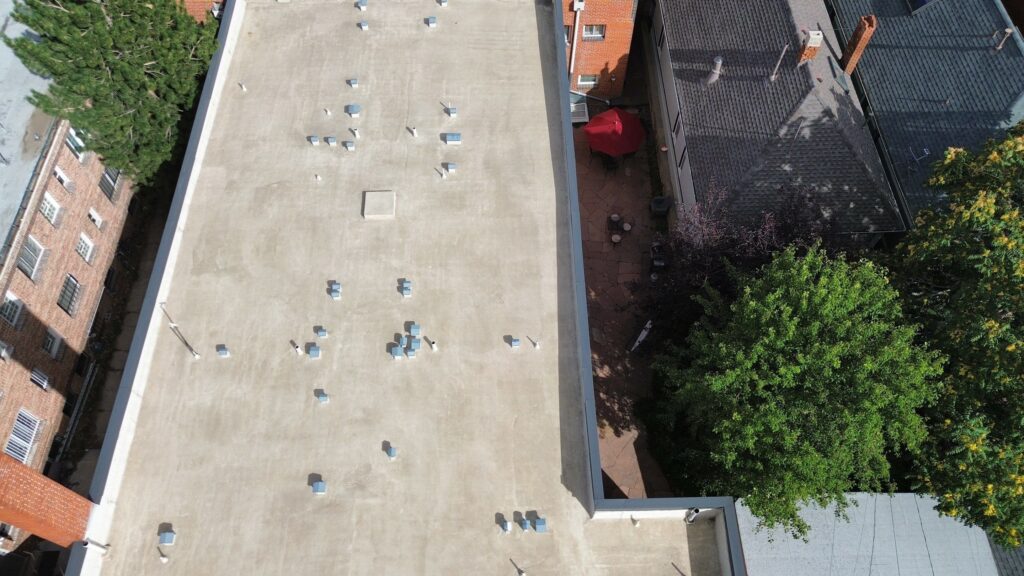
What Is TPO Roofing?
Thermoplastic Polyolefin (TPO) roofing is a single-ply membrane system developed to meet the unique challenges of flat and low-slope roofing. Known for its exceptional durability, heat-reflective properties, and cost-efficiency, TPO is a preferred material in modern commercial construction and is rapidly gaining traction in residential applications. Its composition—typically a blend of polypropylene and ethylene-propylene rubber—provides an ideal balance of flexibility and weather resistance.
Advantages of TPO Roofing for Flat Roof Applications
Energy Efficiency and UV Resistance
One of the defining features of TPO roofing is its high reflectivity. The membrane’s white surface reflects a significant portion of solar radiation, reducing heat absorption and helping maintain cooler indoor temperatures. This energy-efficient characteristic is particularly beneficial in climates like Denver, Colorado, where summers can be intense. By lowering air conditioning demand, TPO contributes to both environmental sustainability and long-term energy savings.
Cost-Effective Installation and Material Affordability
TPO roofing provides excellent performance at a lower price point than many competing systems. The membrane is manufactured in large rolls—typically 10, 12, or 20 feet wide—reducing the number of seams and labor time during installation. This ease of application makes TPO an economical choice for property owners seeking quality roofing solutions without exceeding budget constraints. Additionally, the material’s compatibility with multiple attachment methods—mechanical fasteners, adhesives, or ballast—adds versatility to its installation.
Long-Term Durability and Weather Resistance
Designed to withstand punctures, tears, and the wear caused by standing water, TPO roofing offers superior weather resilience. Its flexibility allows it to accommodate structural movement caused by thermal expansion or shifting foundations. TPO membranes are also resistant to mold, algae, and chemical exposure, making them ideal for urban environments where pollutants and debris may accumulate on rooftops.
Low Maintenance Requirements
Another benefit of TPO roofing is its minimal maintenance demands. Once installed, the roof requires only periodic inspections and basic cleaning to preserve its integrity. Seam welding during installation creates strong, watertight bonds that minimize the risk of leaks. When professionally installed and properly maintained, TPO roofs can last 20 to 30 years, providing reliable long-term performance.
How TPO Roofing Is Installed
TPO installation begins with the removal of the existing roof, followed by the placement of insulation boards tailored to the building’s energy needs. The membrane is then rolled out across the surface and fastened or adhered to the insulation layer. Overlapping seams are heat-welded using a hot-air gun, creating a monolithic waterproof surface. This process ensures that the joints are as durable as the membrane itself. Finally, flashing is applied around penetrations and roof edges to prevent water intrusion.
TPO Roofing and Environmental Sustainability
TPO is a 100% recyclable roofing material, making it an eco-conscious choice for building owners seeking to reduce their environmental footprint. Many TPO products meet or exceed cool roofing standards established by organizations like ENERGY STAR® and the Cool Roof Rating Council (CRRC). The combination of recyclability and energy conservation makes TPO roofing a strategic investment in sustainable construction practices.
Factors That Influence the Cost of TPO Roofing
The cost of installing TPO roofing varies based on several factors, including:
- Membrane thickness (usually between 45 mil and 80 mil)
- Insulation type and R-value
- Attachment method
- Roof complexity and accessibility
- Local labor rates
On average, material and labor costs range from $7 to $14 per square foot. Additional expenses may include the removal of the existing roof, insulation upgrades, and custom flashing details for chimneys, HVAC units, or skylights.
When to Choose TPO Roofing Over Other Systems
TPO is best suited for flat or gently sloped roofs where waterproofing, energy savings, and affordability are top priorities. It offers a clear advantage in commercial construction but is also highly applicable in residential settings such as home additions, garages, and multi-family housing. Building owners looking for a low-maintenance, cost-effective system with proven performance in extreme temperatures will find TPO an excellent match.
Common Misconceptions About TPO
While TPO roofing is often labeled a commercial solution, its benefits translate seamlessly into residential use. Another misconception is that white TPO quickly becomes unsightly due to dirt accumulation. In reality, periodic rinsing or soft washing easily restores its clean appearance. Concerns over longevity can also be addressed with proper installation and routine inspections, extending a roof’s life well beyond two decades.
Why Denver Property Owners Are Choosing TPO
In Denver, Colorado, where buildings face fluctuating temperatures, intense sunlight, and occasional snow accumulation, TPO roofing proves to be a reliable defense. Its ability to adapt to thermal changes while maintaining watertight performance is crucial in the region’s climate. For residents and businesses evaluating roofing in Denver, TPO offers a low-risk, high-reward investment.
One of the trusted experts for TPO and other modern flat roofing systems is Tried and True Roofing, a roofing company in Denver, Colorado known for professional service and precise craftsmanship.
Final Thoughts
TPO roofing systems offer a rare blend of affordability, durability, and sustainability. Their seamless installation, strong UV resistance, and minimal upkeep make them a standout choice for both commercial and residential buildings. As energy costs continue to rise and eco-friendly practices become more essential, TPO remains a top-tier solution for anyone considering modern roofing in Denver or beyond.

